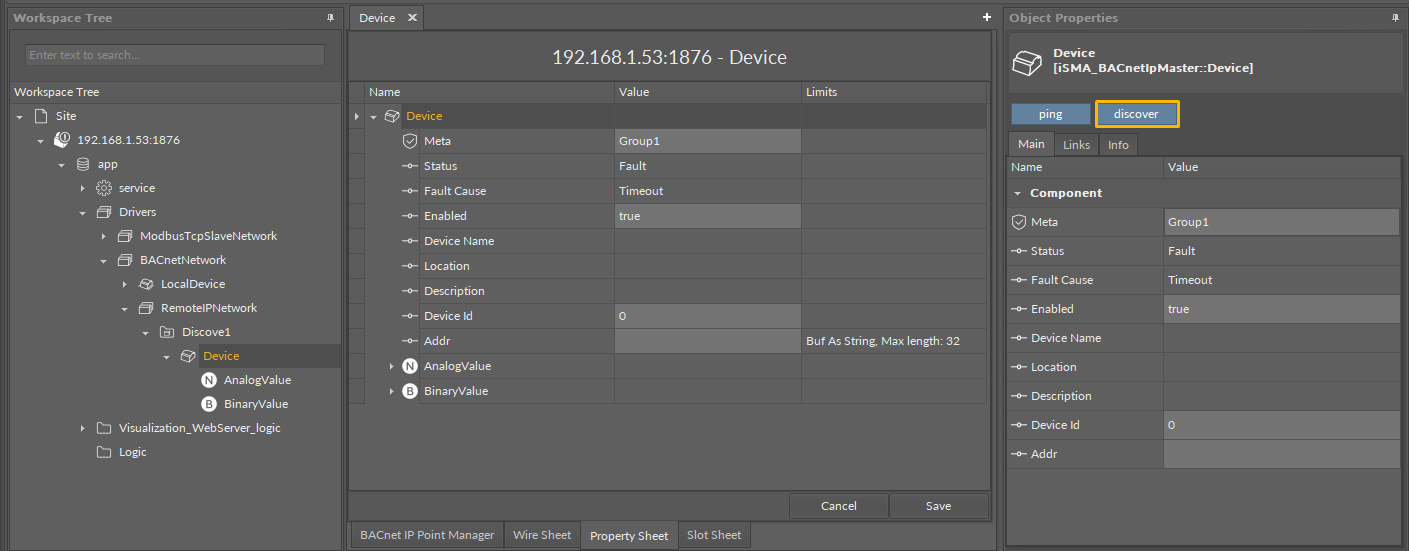BACnet IP Device
The BACnet IP Device component is a component, which is responsible for servicing a physical device connected to the iSMA-B-AAC20 controller by the BACnet protocol. Each device is represented by a unique BACnet device ID. The component has the ping action available under right-click which sends a test message to the device to check the device status (meaning “Monitor” ping requests). The ping requests are also generated at the network level, and the network’s monitor periodically pings (queries) devices. While receiving any response from the device, including an exception response, it is considered proof of communication. All data points which are to be read from or written to the device must be placed under the Device component.

BACnet IPMasterDevice component
Slots
The BACnet IP Device component has the following slots:
Status: component’s current status;
Fault Cause: fault cause description;
Enabled: enable/disable servicing device;
Device Name: read-only, the BACnet device name (read from device);
Location: read-only, the BACnet device location description (read from device);
Description: read-only, additional description label (read from device);
Device ID: the BACnet device address (In Discover action this field is filled automatically);
Add: additional field for the BACnet device IP address; the IP address should be entered for the devices installed out of local network range, behind the router (for the devices installed in the local network it can be empty).
Points in the Device
Similarly as the RemoteIPNetwork component supports discovering devices, the Device component in the BACnet client network supports discovering points. The action is available in the context menu of the Device component or directly in the Object Properties window. As a result of the process, all points added in the device will be listed as children components. Use the BACnet IP Point Manager to manage the discovered points.

Points discovering action
